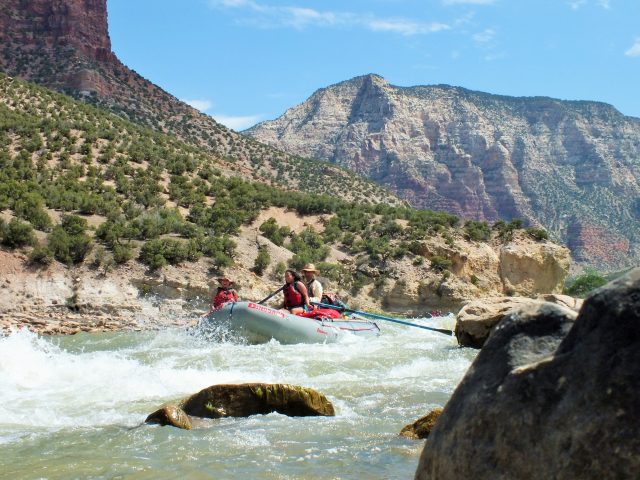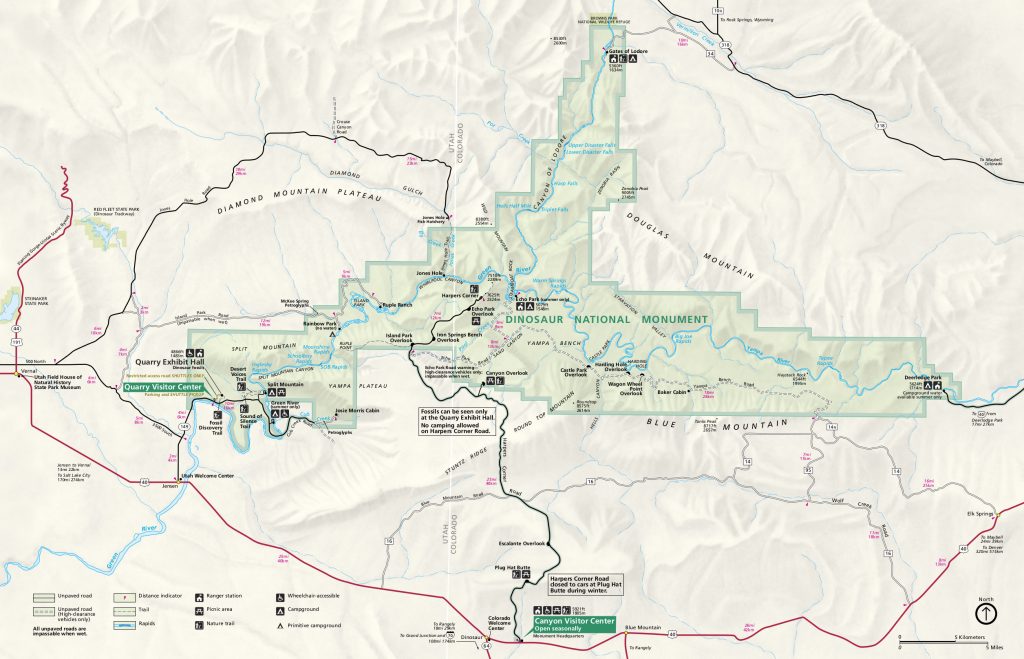History of Warm Springs Rapid
Einstein discovered that water on a perfectly flat plane won’t trickle in a straight line, but rather snake its way down in a series of S turns. It’s something I always tell guests as you come into the goose necks on the Yampa River as we float through the heart of Dinosaur National Monument. For the next 20 miles until the confluence with the Green River, the Yampa is mostly flat water. As you wind your way downstream the water becomes tranquil. It’s an easy float under the grand overhangs the river has carved into the sandstone. It’s a peaceful change from the whitewater of Teepee rapid and Big Joe. The slow water gives way to flood plains like Laddies Park and Mantle’s Cave. These self same spits of tillable land played host to archaic peoples, Utes, pioneers, outlaws and boatman. The river here was easy to divert for irrigation; warm and calmer still in summer months. You may find yourself thinking – looking out at the calm clay water slipping by – that it’s truly smooth sailing through calm seas. Why then do the boatman seem tense? It must be that the canyon closes in once more, reasserting its undeniable presence. That must be it. Eventually though, the flat water is a sign of something else. It is the calm before the storm. A storm that has its roots in the summer of 1965.
On June 10, 1965 a storm that can aptly be described as biblical built in the northern sky. It ballooned over Starvation Canyon which empties into Warm Springs draw. The storm spilled its considerable guts on the draw. George Wendt, camped at Warm Springs on that day, took shelter in an outhouse as the earth around him turned into a raging slime, laden with boulders and the broken bones of trees. The storm moved 33 million pounds of debris into the Yampa river, damming it. When the river broke through, Warm Springs, once a minor wave train, was now one of the biggest pieces of white water in the West. At the time of its formation, Al Holland and Les Oldham were upstream guiding a group of boy scouts down river. Coming from Mantle cave, the river was even stiller than it is today. Les had taken off his life vest, for he knew the river well, and knew it was calm water until the confluence and Whirlpool canyon. But the lack of current must have seemed odd to someone who knew it so well. Les was sitting on his vest as they came to Warm Springs. Sadly, it would be his undoing. He was thrown overboard in the now turbulent rapid. Holland saw the passengers safely through but couldn’t find Les in the tumultuous water. His body was recovered 17 days later. News quickly went out to boaters, on and off the river, of the new rapid and the danger it presented. By the next year, the young rapid had shifted once again, this time into something far more manageable.
Warm Springs remains a major rapid today one of Colorado white water raftings top drops. However, the rapid that Al Holland encountered in the summer of 1965 has matured over the past 50 years. In that time, rocks from the cliff face on river left have fallen in and settled in various places within the rapid. While the rapid still has features capable of overturning boats, by now boatmen know the line through. Each summer hundreds of boaters successfully navigate this rapid. And for good reason. The Yampa River through Dinosaur National Monument has so much to offer. It is the last undammed tributary of the Green River and Colorado river systems. It is a crucial link to the ecological health of the native species that call these water ways home. The river and its canyons have sustained hunter-gatherers over 8,000 years. And, of course, the Yampa offers thrill seekers adventures on and off the water.


